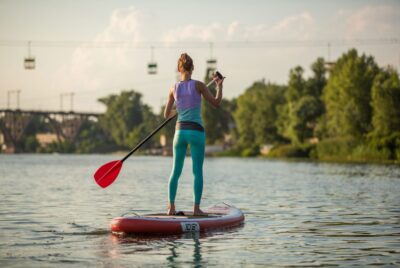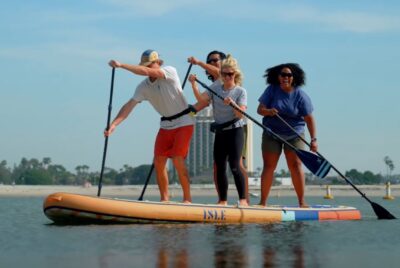Best Places To Paddle Board: 9 Ways To Find Top Spots Anywhere
*We may earn a commission for purchases made using our links. Please see our disclosure to learn more.
Are you on the hunt for new places to paddle board? Whether you’re a paddle boarding pro or just dipping your toes into the water, finding that perfect spot can take your experience to the next level.
Imagine being able to find top local spot wherever you go – sounds pretty amazing, right? In this article, we’re going to share some simple and fun ways to discover awesome paddle boarding spots, no matter where you’re headed.
So, let’s grab our boards and explore how to find your next SUP adventure! 🏄♂️
| Looking for our best paddle board product recommendations? Check the Paddleboard Insiders Buyer Guides |
Table Of Contents
Use These Resources To Find The Best Places To Paddle Board:
1. Use Our Website Resources
I might be biased but I personally think that our ‘best paddle boarding’ blogs are great 😉. We have created detailed guides on the the best places to paddle board in many different locations.

You can get guides for places like:
- Aruba
- Sydney
- Austin
- Maui
- Miami
- Mission Bay
- San Francisco
- Seattle
- And many more…
| You can get access to the entire list here: Paddleboard Insiders Location Guides |
I also created a nice interactive guide that you can use to find different locations all around the world. It’s definitely worth checking out.
2. Other Travel Blogs and Websites
Travel blogs are fantastic for finding paddle boarding spots around the world. Websites like “Travel + Leisure,” “Lonely Planet,” and niche blogs like “The SUP Life” and “Paddle Boarding Adventures” are great places to start.
You’ll often find articles titled things like “Top 10 Paddle Boarding Destinations in Europe” or “Must-Visit SUP Spots in the Caribbean.” These posts usually come with personal stories, nice photos, and plenty of useful tips. This is a really good way to find the best places to paddle board.
How to Use Them:
- Start Searching: Head to Google and type in keywords like “best paddle boarding blogs” or “paddle boarding spots in [country].”
- Dive into Articles: Browse through the articles, paying attention to the details and photos that catch your eye.
- Save Your Faves: Bookmark the ones you like for easy access later.
- Jot Down Notes: Make a list of the spots mentioned, along with any special tips or things to watch out for.
| 💡 You can look into a paddle boarding company called ‘Gili Sports‘ – they often have nice location guides. |
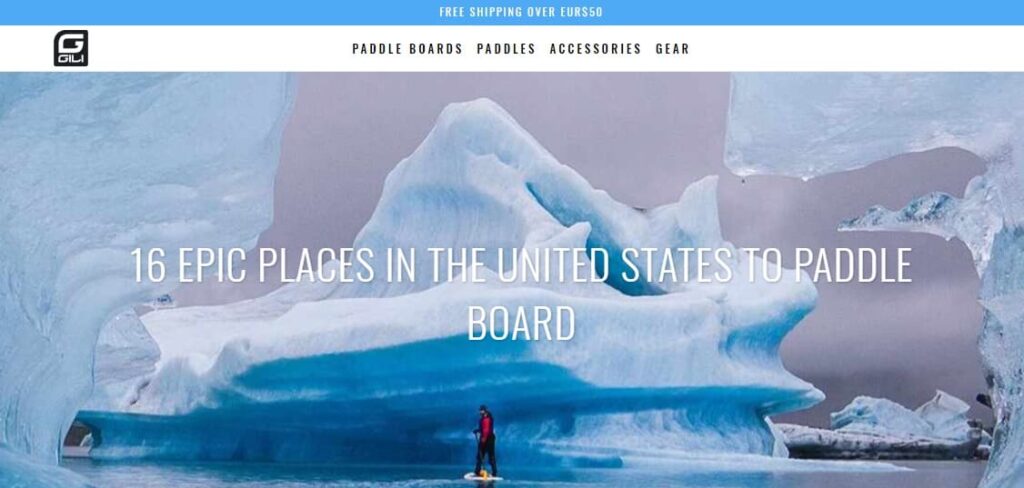
3. Social Media and Online Communities
Social media is a goldmine for discovering new paddle boarding locations. On Instagram, try searching hashtags like #paddleboardingadventures, #suptravel, or #paddleboardlife to find beautiful photos and videos.
YouTube channels like “SUPboarder” and “TheSUPChannel” offer tons of content, from gear reviews to top paddling spots.
And don’t forget about Facebook groups like “Stand Up Paddle Boards and SUP Boarding” where you can ask for recommendations and connect with fellow paddlers.
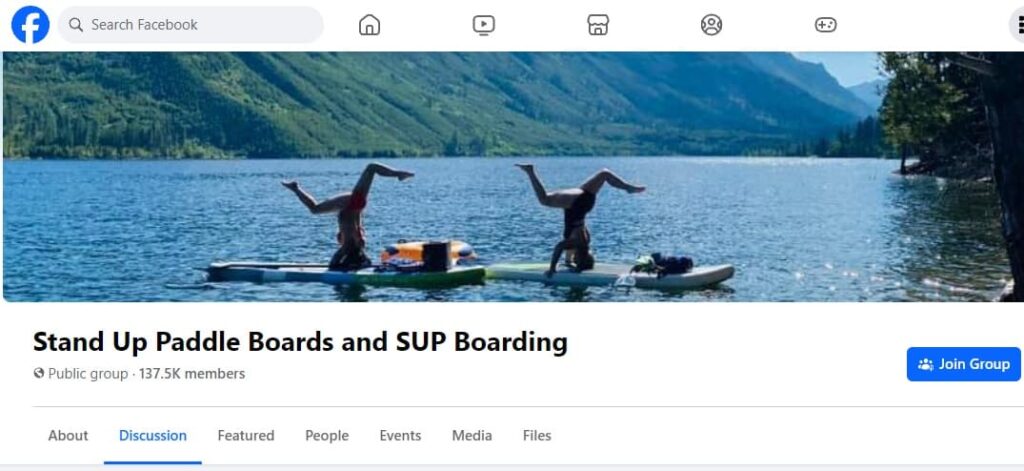
How to Get Started:
- Instagram:
- Search Hashtags: Use specific hashtags to find posts and get inspired.
- Explore: Click on location tags to see where the photo was taken.
- Engage: Don’t hesitate to comment or message people for more details.
- YouTube:
- Find Channels: Look for channels that focus on paddle boarding.
- Watch and Learn: Check out videos for visual inspiration and tips.
- Subscribe: Subscribe to channels you enjoy and save videos to a playlist.
- Facebook Groups:
- Join the Community: Find and join groups dedicated to paddle boarding.
- Ask Questions: Post questions about destinations or ask for advice.
- Share Your Stories: Engage with the community by sharing your own experiences.
4. Google Maps and Reviews
Google Maps is super handy for finding nearby paddle boarding spots, especially when you’re exploring a new area. Just type in “paddle boarding near me” or something similar, and you’ll see options pop up. You can check out photos, read reviews, and see what the locals recommend. If you do this, it’s inevitable that you find the best places to paddle board.
Check what my ‘paddle boarding miami’ search showed up below:
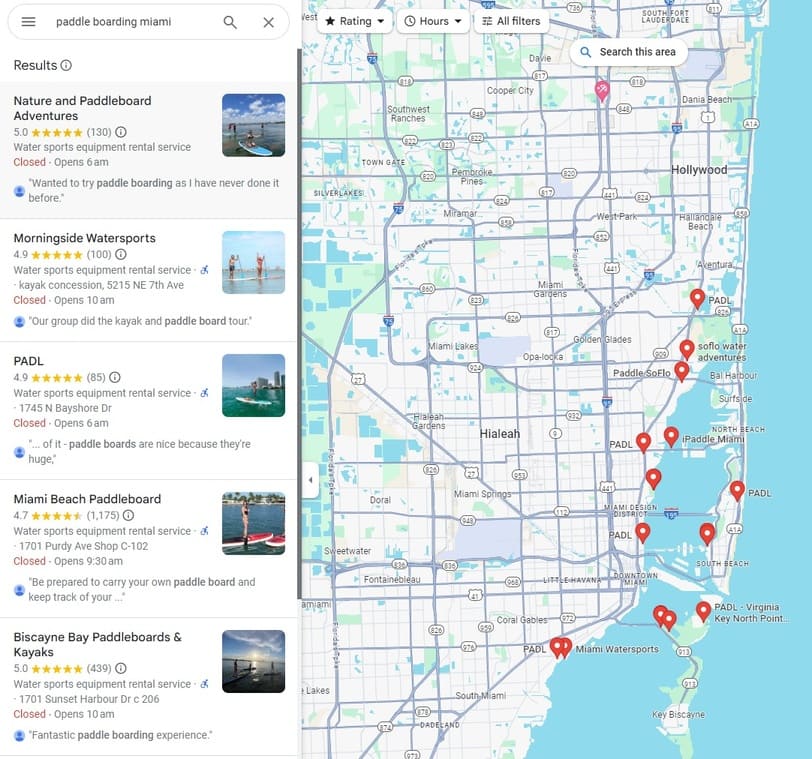
How to Use It:
- Search for Locations: Enter keywords like “paddle boarding near me” or “SUP in [city].”
- Explore the Map: Click on various water bodies or parks to see what’s available.
- Read Reviews: Look at what people are saying about each spot to get a sense of what to expect.
- View Photos: Check out user-uploaded photos for a preview of the spot.
- Plan Your Trip: Note down the location, directions, and any amenities nearby.
5. Local Tourism Websites
Local tourism websites are often packed with information about outdoor activities, including paddle boarding. Sites like “Visit California” or “Tourism New Zealand” have sections dedicated to things to do, with details on the best spots for SUP.
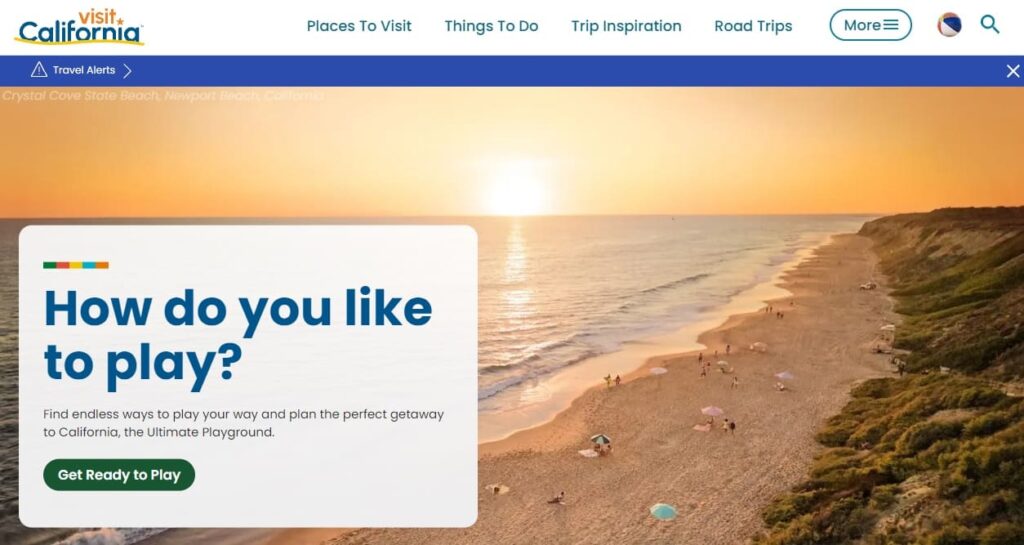
Steps to Find Info:
- Search for Official Sites: Google the official tourism site for your destination, like “Visit Florida” or “Explore Canada.”
- Navigate to Activities: Look for tabs or sections like “Things to Do” or “Outdoor Activities.”
- Find Paddle Boarding Info: Browse the sections to find specific details about paddle boarding.
- Check Rules and Permits: Make sure to read up on any permits or regulations, especially if you’re heading into protected areas.
- Save the Details: Bookmark or print out maps and guides for easy reference.
6. Apps and Websites for Outdoor Activities
Apps like “Go Paddling,” “Paddle Log,” and websites like “AllTrails” are fantastic for finding paddle boarding spots and planning your trips. These tools often include detailed maps, user reviews, and even route tracking. This is a goldmine for finding the best places to paddle board anywhere.

How to Use Them:
- Download the Apps: Get apps like Go Paddling or AllTrails from your app store.
- Set Up Your Profile: Sign up and customize your preferences for paddle boarding.
- Explore Features: Use the spot finder to discover new locations, check out reviews, and plan your route.
- Track Your Paddles: Use the app’s tracking features to monitor your paddling trips.
- Share Your Experiences: Post your trips and share tips with other users.
7. Ask Locals or Instructors
Sometimes, the best paddle boarding spots aren’t listed online—they’re shared by word of mouth. Chatting with locals, instructors, or shop owners can give you the inside scoop on the best places to paddle board.

How to Go About It:
- Visit Local Shops: Pop into paddle board rental shops or tour companies.
- Ask for Recommendations: Talk to the staff about their favorite spots and any insider tips.
- Consider a Lesson: Taking a lesson or a guided tour can also be a great way to learn about the area.
- Build Connections: Keep in touch with locals or instructors for future tips.
- Stay Updated: Get updates from locals about changing conditions or new spots.
8. YouTube Vlogs and Channels
YouTube is a fantastic place to see paddle boarding spots in action. Channels like “SUPboarder” and “Paddle TV” showcase amazing destinations and provide useful tips.

How to Use YouTube:
- Search for Content: Look for videos on paddle boarding in specific destinations or general SUP guides.
- Watch and Take Notes: Watch videos to see different locations and note down anything that catches your interest.
- Subscribe to Channels: Follow channels you find helpful for easy access to new content.
- Engage with Creators: Leave comments with questions or ask for more details.
- Create Playlists: Organize videos into playlists for future viewing.
9. Nature Reserves and National Parks
Nature reserves and national parks are often perfect for paddle boarding, offering relaxed settings and pretty scenery. Many of these places allow paddle boarding, but it’s important to check the rules.
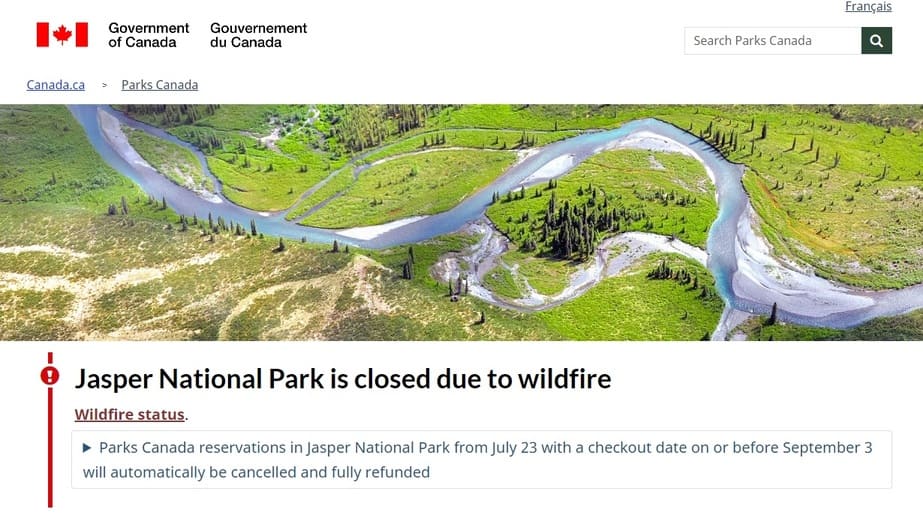
How to Prepare:
- Identify Parks and Reserves: Search for national parks or nature reserves in the area you’re visiting.
- Visit Official Websites: Go to their official websites to find information about water activities.
- Check for Permits: Look into whether you need a permit or pass to paddle board there.
- Plan Your Route: Find out the best access points and recommended paddling routes.
- Gear Up and Go: Make sure you have all the necessary equipment and know the safety guidelines for the area.
| 💡 Type in ‘nature reserve in {location} to find these national parks easily. |
Best Times To SUP
Finding the perfect time to paddle board can really enhance your experience. Generally, spring and summer are great seasons to hit the water because the weather is warmer and the water is usually calmer. Fall can also be fantastic—cooler temperatures and fewer people around make for a peaceful outing.
If you’re lucky enough to live in a tropical area, you might paddle year-round, but just keep an eye on the rainy season and potential storms.
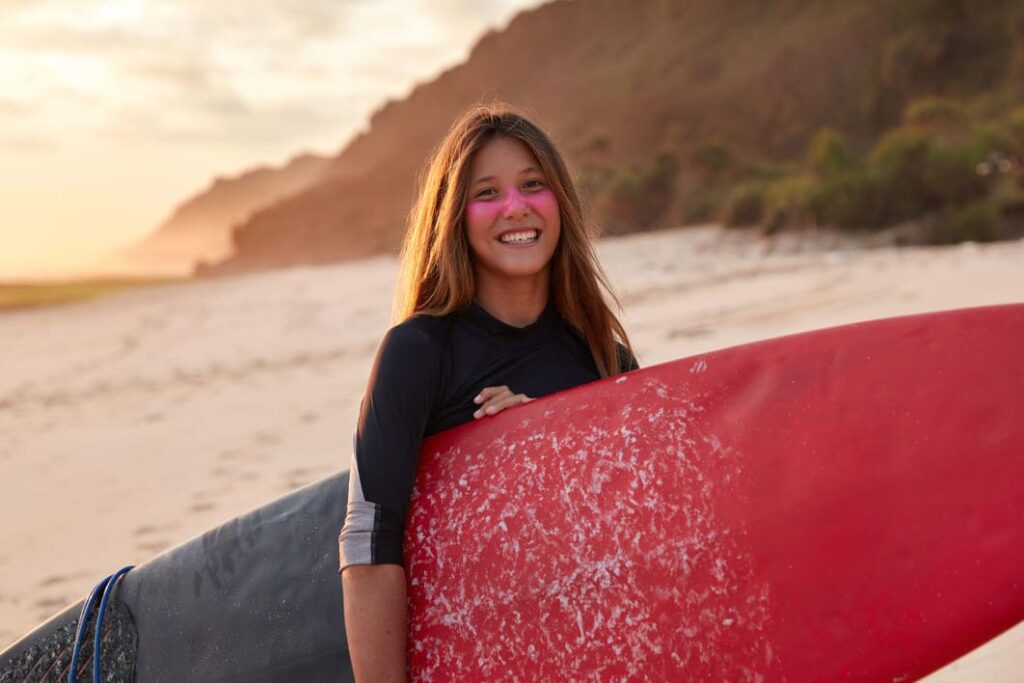
As for the best time of day, early mornings and late afternoons are top picks. Morning paddles often mean calm, glassy waters and a serene atmosphere. There’s something truly magical about watching the sunrise from your board. Late afternoons, especially around sunset, offer gorgeous views and a relaxing vibe as the day winds down. Also, if you’re near the ocean, be sure to check the tide schedules.
Low tides might expose rocks or sandbars, while high tides can bring stronger currents. And of course, always keep an eye on the weather—avoid heading out in high winds or stormy conditions for your safety.
Paddle Boarding Safety Tips
Here are some essential tips for you to keep in mind when you paddle board:
| Wear a Life Jacket: | Always wear a life jacket, even if you’re a strong swimmer. It’s crucial for safety, especially in deeper waters. |
| Check the Weather: | Look at the weather forecast before heading out to avoid storms or strong winds. |
| Know How to Swim: | Make sure you’re confident in your swimming abilities, as it’s essential for handling emergencies. |
| Use a Leash: | Attach a leash to your board to keep it close if you fall off, which is especially important in the ocean or strong currents. |
| Carry Emergency Items: | Bring a whistle and a phone in a waterproof case. A whistle can help signal for help, and a phone is useful for contacting someone if needed. |
| Be Aware of Wildlife: | Stay mindful of local wildlife and maintain a safe distance to respect the animals. |
| Inform Someone of Your Plans: | Let someone know your planned route and estimated return time. This ensures that if anything goes wrong, someone knows where to look for you. |
Essential Paddle Boarding Gear
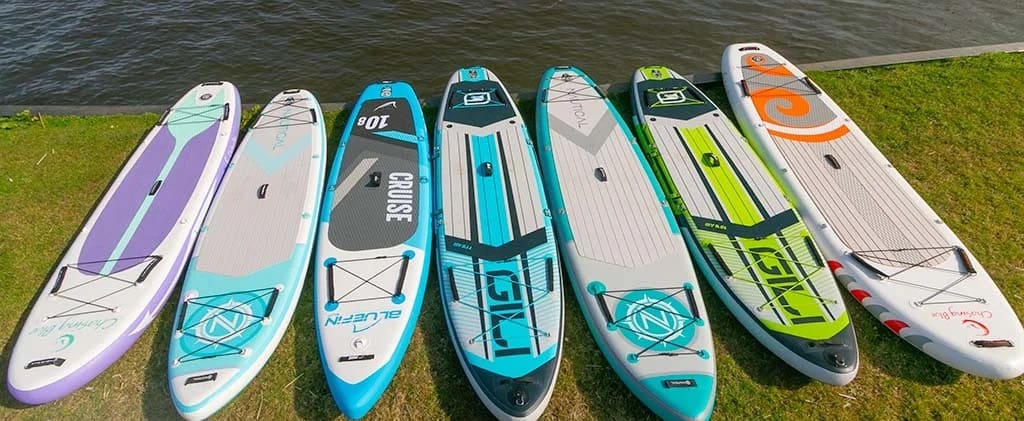
Having the right gear can make your paddle boarding experience safe and enjoyable. Here’s a list of essential items you’ll need, along with some optional accessories:
Paddle Board
The most important piece of equipment is, of course, the paddle board. There are different types to choose from:
- All-Around Boards: Great for beginners and versatile for various conditions.
- Touring Boards: Designed for longer distances and smoother gliding.
- Inflatable Boards: Convenient for storage and travel, and surprisingly sturdy.
- Racing Boards: Narrow and fast, suitable for competitive paddlers.
Recommended Brands: Some popular brands include ISLE, NIXY, and BOTE. These brands offer a range of options for different skill levels and uses.
| Here are some of my favorite paddle boards: 7 Incredible Beginner Paddleboards To Buy In 2024 On A Budget |
Paddle
A good paddle is crucial for efficient paddling. Look for one that is lightweight and the right height for you.
- Adjustable Paddles: Perfect for sharing among people of different heights.
- Fixed-Length Paddles: More rigid and often used by experienced paddlers.
Materials: Paddles can be made from aluminum, fiberglass, or carbon fiber, with carbon fiber being the lightest and most efficient.
| Here’s everything you need to know about paddles: How To Choose Paddle Board Paddles: A Guide To Find The Perfect Fit |
Life Vest (PFD)
Safety first! A life vest, or personal flotation device (PFD), is essential for all paddlers. Look for a vest that is comfortable and doesn’t restrict your movement.
- Type III PFDs: Generally recommended for paddle boarding as they provide a good balance of buoyancy and mobility.
Recommended Brands: NRS, O’Neill, and Stohlquist are well-known for making reliable and comfortable life vests.
| Here are the life jackets that we recommend: The 8 Best Paddleboarding Life Jackets Of 2024 |
Waterproof Bags
Keep your belongings dry with a waterproof bag. These are essential for storing items like keys, snacks, and extra clothing.
- Dry Bags: Available in various sizes, these are perfect for keeping your gear dry on the water.
Recommended Brands: Sea to Summit and Earth Pak offer durable and reliable dry bags.
| Here are some great dry bags: Best Waterproof Bag For Paddle Boarding – 6 Perfect Options 2024 |
Optional Accessories
- Dry Bags: For extra waterproof storage, especially for electronics and valuables.
- Paddle Board Anchors: Useful if you plan to stop and relax without drifting away.
- Waterproof Phone Cases: Protect your phone while keeping it accessible for photos or emergencies.
Where to Purchase: You can find paddle boarding gear at specialty stores like REI, Dick’s Sporting Goods, and online retailers such as Amazon and the official websites of the brands mentioned.
| Here are my favorite accessories: The 23 Best Paddleboard Accessories That You Need In 2024 |
Conclusion:
Paddle boarding is an awesome way to explore new places, soak up the scenery, and get a bit of a workout at the same time. Whether you’re a seasoned paddler or just starting out, finding the best places to paddle board can really elevate the experience.
There are so many ways to discover great locations, from checking out travel blogs and social media to using local guides and handy apps. Remember to always prioritize safety, have the right gear, and choose the best times for a smooth and enjoyable paddle.
So, grab your board, get out there, and enjoy the ride—happy paddling!
| Looking for insider guides to some amazing paddle boarding locations? Check the Paddleboard Insiders Location Guides |
Best Places To Paddle Board FAQs
Where is paddle boarding most popular?
Paddle boarding is popular in places with calm waters and beautiful scenery. Some of the top spots include Hawaii, California, Florida, Australia, and the Mediterranean. You can also find great paddle boarding locations on lakes and rivers around the world.
Can you stand up paddle board anywhere?
You can paddle board on almost any body of water, from oceans and lakes to rivers and bays. However, it’s important to check local rules and regulations, as some areas may have restrictions. Always choose a spot that matches your skill level, especially if you’re a beginner.
Can you paddle board without falling in?
Yes, you can! While falling in is part of the learning process, many people paddle board without taking a dip. It helps to start in calm, flat water and practice your balance. As you get more comfortable, you’ll likely fall in less often.
Is it safe to paddle board in the sea?
Paddle boarding in the sea can be safe, but it’s important to be aware of a few things. Check the weather and sea conditions before heading out, and be mindful of tides and currents. Always wear a life jacket and use a leash to keep your board close. It’s also a good idea to paddle with a buddy, especially if you’re new to the ocean.
Is paddle boarding harder than surfing?
Paddle boarding is generally considered easier to learn than surfing. The boards are larger and more stable, making it easier to balance. Unlike surfing, you don’t need waves to paddle board, so you can practice on flat water. However, like any sport, paddle boarding has its challenges, especially when it comes to rough water or windy conditions.



